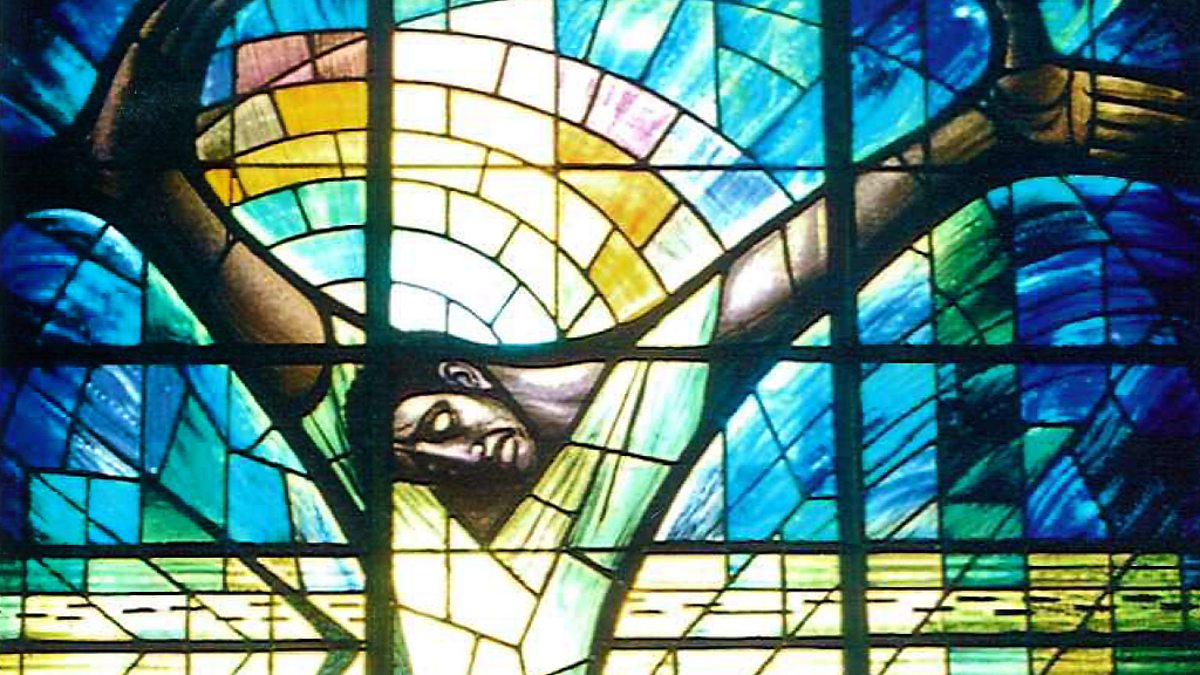I heard Gary Younge's radio programme about The Wales Window on BBC World Service early this morning, having read this article a while back
"In 1963, racist bombers blew up the 16th Street Baptist Church in Birmingham Alabama, killing four girls in the blast. The murder of children marked another low in the violent resistance to civil rights. News of the bombing was broadcast worldwide.
The Welsh sculptor John Petts heard about it on the radio, as he worked in his studio.He was so upset he wanted to do something to help.He contacted a local newspaper and a campaign was launched to raise money to help rebuild the devastated church.
No one was allowed to give more than half a crown - to ensure that no rich benefactor could take credit for the money raised. There were reports of children, black and white, queuing up in Cardiff to donate their pocket money. Tens of thousands of people contributed to the fund.
With the money that was raised, Petts was commissioned to make a new stained glass window for the Church. Grand in scale, it depicted a black man, arms outstretched, reminiscent of the crucifixion. Petts drew on his experiences as a medic in World War II to create his image of the 'damaged male body'. He was also inspired by the Sharpeville Massacre in South Africa, which had happened only a few years before.
Gary Younge travels to Birmingham Alabama to see the window and how it has become a focus of worship, becoming one of the most famous pieces of art to come out of the darkness of the civil rights period.
At its foot a simple message; 'Given by The People of Wales'."
"In 1963, racist bombers blew up the 16th Street Baptist Church in Birmingham Alabama, killing four girls in the blast. The murder of children marked another low in the violent resistance to civil rights. News of the bombing was broadcast worldwide.
The Welsh sculptor John Petts heard about it on the radio, as he worked in his studio.He was so upset he wanted to do something to help.He contacted a local newspaper and a campaign was launched to raise money to help rebuild the devastated church.
No one was allowed to give more than half a crown - to ensure that no rich benefactor could take credit for the money raised. There were reports of children, black and white, queuing up in Cardiff to donate their pocket money. Tens of thousands of people contributed to the fund.
With the money that was raised, Petts was commissioned to make a new stained glass window for the Church. Grand in scale, it depicted a black man, arms outstretched, reminiscent of the crucifixion. Petts drew on his experiences as a medic in World War II to create his image of the 'damaged male body'. He was also inspired by the Sharpeville Massacre in South Africa, which had happened only a few years before.
Gary Younge travels to Birmingham Alabama to see the window and how it has become a focus of worship, becoming one of the most famous pieces of art to come out of the darkness of the civil rights period.
At its foot a simple message; 'Given by The People of Wales'."




Comment